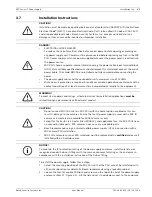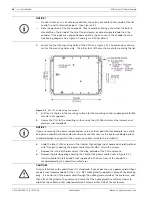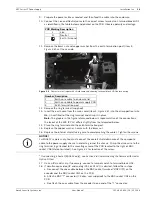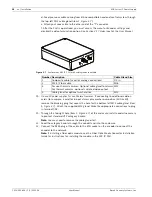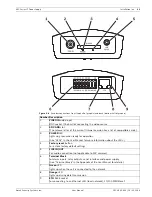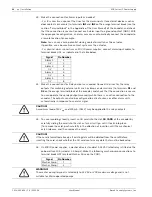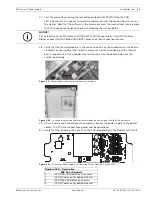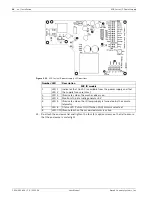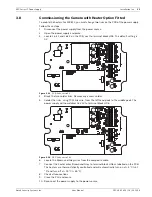
10
en | Product Description
MIC Series IP Power Supply
F.01U.265.804 | 1.6 | 2012.08
User Manual
Bosch Security Systems, Inc.
2
Product Description
2.1
Overview of Functions
Network video server
The encoder is a compact network video server for a connected video source. It is primarily
designed for encoding video, audio, and control data for transfer over an IP network. With its
encoding in the H.264 format, the encoder is ideally suited for making existing analog CCTV
cameras IP-compatible and for remote access to digital VCRs and multiplexers. The use of
existing networks means that integration with CCTV systems or local networks can be
achieved quickly and easily. Two units, for example an encoder as a sender and a VIP XD as a
receiver, can create a standalone system for data transfer without a PC. Video images from a
single sender can be received simultaneously on multiple receivers. Audio signals can also be
transmitted from and to compatible units.
Receiver
Compatible H.264 enabled hardware decoders (for example the VIP XD) can be used as
receivers. Computers with decoding software such as VIDOS or computers with the Microsoft
Internet Explorer Web browser can also be used as receivers.
Video encoding
The encoder uses the H.264 video compression standard. Thanks to efficient encoding, the
data rate remains low even with high image quality and can also be adapted to local
conditions within wide limits.
Audio encoding
The encoder uses the G.711 and L16 audio compression standards. G.711 is the default
setting both for live transmission and recording. When configuring with a Web browser, you
can select L16 for recording. Using video management systems, L16 is also available for live
audio.
Dual Streaming
Dual Streaming allows the incoming data stream to be encoded simultaneously according to
two different, individually customized profiles. This feature creates two data streams that can
serve different purposes, for example one for recording and one optimized for live
transmission over the LAN.
Multicast
In suitably configured networks, the multicast function enables simultaneous real-time video
transmission to multiple receivers. The UDP and IGMP V2 protocols must be implemented on
the network for this function.
Encryption
The encoder offers a variety of options for protection against unauthorized reading. Web
browser connections can be protected using HTTPS. You can protect the control channels via
the SSL encryption protocol. With an additional license, the user data itself can be encrypted.
Remote control
For remote control of external units such as pan or tilt heads for cameras or motorized zoom
lenses, control data is transmitted via the encoder's bidirectional serial interface. This
interface can also be used to transmit transparent data.

















